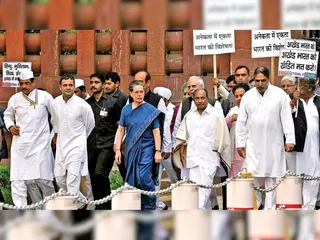Positive Effects of Nano Bubble Technology on Delhi Zoo's Ecosystem

Positive Effects of Nano Bubble Technology on Delhi Zoo's Ecosystem
The information provided in this content is intended for general informational purposes only. While efforts have been made to ensure its accuracy at the time of publication, there is no guarantee that all details are current, complete, or correct. The content should not be relied upon as a sole source for decision-making. Users are encouraged to verify any information before acting upon it.









Delhi, India's capital, blends history, politics, and culture, featuring iconic monuments and diverse traditions.
The Chief Minister of Delhi is the head of the NCT's government, responsible for executive functions and policy implementation. As of February 20, 2025, Rekha Gupta holds this position, focusing on environmental and infrastructural challenges.
Explore the National Zoological Park in Delhi, home to a diverse collection of Indian and exotic animals. Discover its history, exhibits, conservation efforts, and plan your visit with our comprehensive guide.
Rekha Gupta’s appointment as the Chief Minister of Delhi was driven by BJP's electoral success, her extensive political career, and her commitment to urban development and public welfare.
The introduction of Nano Bubble Technology at Delhi Zoo is expected to bring transformative improvements to its ecosystem. By significantly enhancing water clarity and quality in ponds, the technology ensures a healthier habitat for aquatic animals such as crocodiles and turtles. One of the key benefits is the reduction in maintenance efforts, as the improved oxygen levels prevent harmful algae blooms and bacterial growth, which often degrade water quality. Additionally, visitors can experience a clearer view of these aquatic creatures, enhancing their educational and recreational experience. This innovative approach to water management highlights the zoo's proactive stance on adopting sustainable and eco-friendly technologies, with potential long-term benefits for wildlife conservation.
Explore the vibrant tech scenes of Delhi, Mumbai, Pune, and Bangalore. Compare their cost of living, job markets, culture, and more. Find out which city is the best fit for you.
The National Zoological Park in Delhi has taken a significant step toward improving water quality by implementing Nano Bubble Technology. This advanced water purification technique is designed to enhance the living conditions of aquatic species such as crocodiles and gharials. By introducing ultra-fine oxygen bubbles into the water, this technology effectively eliminates impurities, removes foul odors, and prevents excessive algae growth, which often leads to poor water quality. A 15-day trial phase has been initiated to monitor the efficiency of the process. If proven successful, authorities plan to extend this initiative to other water bodies in the zoo and possibly to other conservation projects across India. The adoption of this technology underscores the zoo's commitment to sustainable environmental practices and the well-being of its inhabitants.
Explore the Lodi dynasty, their rise to power, significant rulers like Bahlul Lodi and Sikander Lodi, their administrative reforms, and lasting impact on the Delhi Sultanate. Learn about their architecture, cultural contributions, and eventual decline.
Rekha Gupta, a BJP leader, is the Chief Minister of Delhi since February 2025. She has a strong political background and focuses on urban development, environmental issues, and public service improvements.
Union Minister of State for Forest, Environment, and Climate Change, Kirti Vardhan Singh, has introduced 'Nano Bubble Technology' at the National Zoological Park in Delhi. This innovative approach aims to enhance water quality in ponds housing aquatic animals like crocodiles and gharials, thereby improving their overall health. The technology works by injecting nano-sized oxygen bubbles into the water, which increases dissolved oxygen levels, eliminates harmful bacteria, and prevents algae buildup. The introduction of this method is part of a broader effort to incorporate sustainable and eco-friendly conservation practices within India's zoos and wildlife reserves. A 15-day trial period has been initiated to assess its effectiveness, and based on positive results, authorities plan to expand its use across other water bodies in India.
India's Union Territories are regions directly governed by the Central Government, each with unique administrative structures and cultural identities.
Explore the rich history of the Sur Dynasty, a prominent Rajput clan that ruled parts of India during the 16th century. Learn about their origins, significant rulers like Sher Shah Suri, their administrative reforms, and their eventual decline. Discover their legacy and impact on Indian history.
The Ministry of Housing and Urban Affairs (MoHUA) is India's central authority for urban development and housing policies, implementing initiatives like Smart Cities Mission and AMRUT for sustainable urban growth.
Restoration and preservation of aquatic ecosystems to support diverse and thriving marine and freshwater life.
Enhancing water transparency by reducing pollutants and turbidity to benefit ecosystems and recreational use.
Preventing algae growth in water bodies involves managing nutrient pollution, implementing physical and biological controls, and promoting public education to protect aquatic ecosystems.
Nanobubble technology offers an efficient solution for breaking down algae, bacteria, and organic waste, enhancing water quality and supporting aquatic ecosystem health.
Explore the fascinating world of crocodiles, gharials, turtles, and fish. Learn about their unique characteristics, habitats, and ecological roles. Discover the differences between these aquatic creatures and their importance in the ecosystem.


Find Teachers, Institutes & Coaching Centers Profiles, Articles, & Test Series
